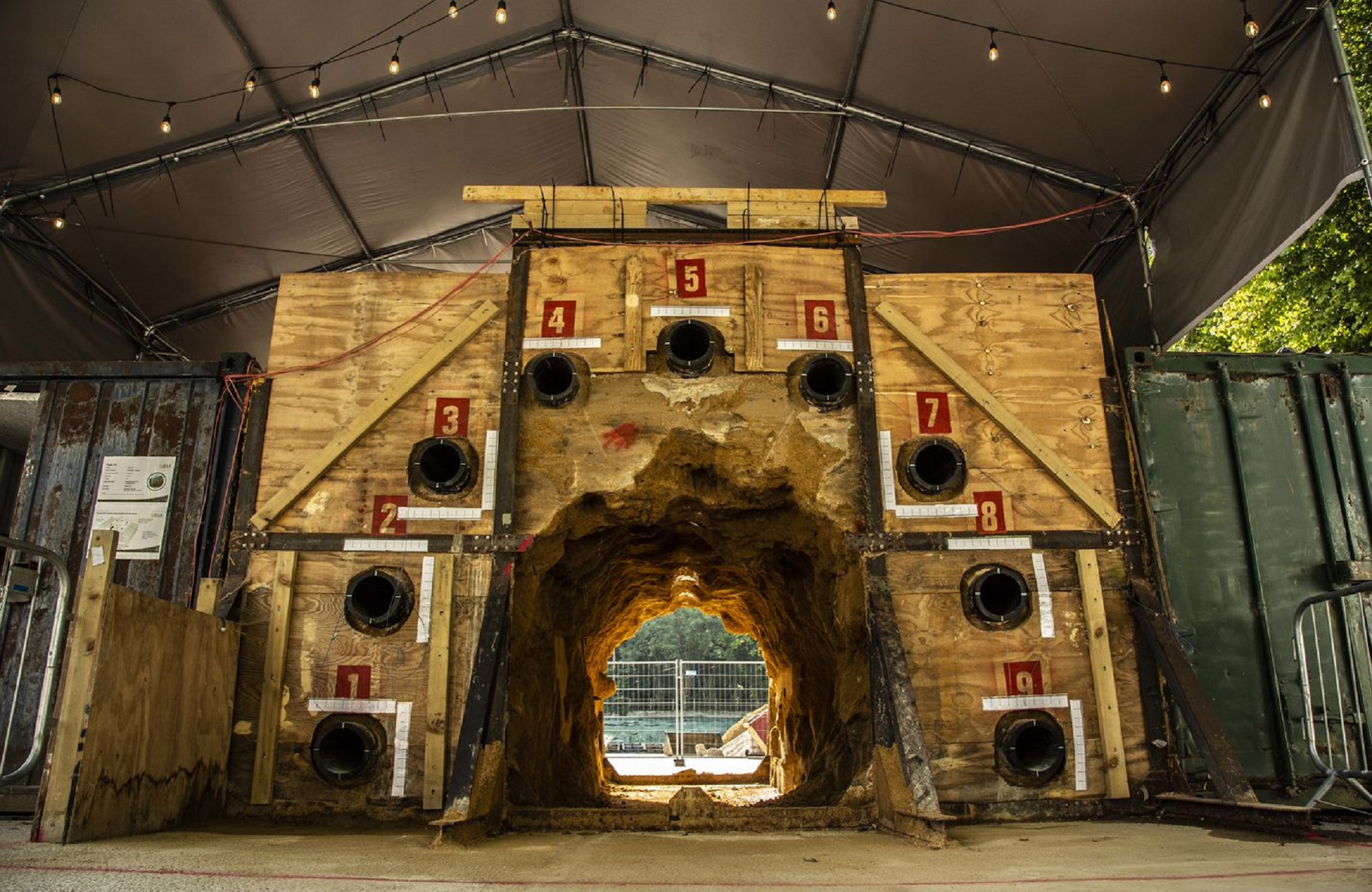And finally… tunnel vision

The world’s first entirely robot-constructed underground structure has been revealed by UK company hyperTunnel.
The ‘Peak XV’ tunnel is intended to demonstrate the potential of a radical new construction method to transform urban planning by building underground infrastructure faster, more affordably and more sustainably than current techniques.
The new automated construction method is designed to build tunnels more than 10 times faster and at half the cost of conventional methods.
Using swarm construction methods according to a digital twin of the tunnel, a fleet of ‘hyperBot’ robots enters the ground via an arch of HDPE pipes. Once inside, the robots 3D-print the tunnel shell by deploying construction material directly into the ground.
The six-metre-long, two-metre-high and two-metre-wide Peak XV ‘pedestrian-scale’ tunnel has been delivered as part of a project for Network Rail and revealed at the British Tunnelling Society Conference & Exhibition in London.
The Network Rail project has been demonstrating the hyperTunnel process, investigating the technologies that are key to low-disruption tunnel repairs for the UK’s regional railway infrastructure, which includes approximately 650 Victorian-age tunnels.
David Castlo, network technical head (mining and tunnels) at Network Rail, said: “Our large portfolio of Victorian tunnels requires increasing levels of work to meet the needs of the railway network.
“However, we want to reduce the level of disruption to our passengers so we are constantly searching for new approaches to enlarging or repairing tunnels that reduce the length of time a tunnel will be closed to trains.
“Peak XV moves us a step closer to that goal and, crucially, with a method that reduces workforce safety risk.”
Steve Jordan, co-CEO and co-founder of hyperTunnel, said: “To unveil our first large scale demonstration tunnel is a big step, not only for hyperTunnel, but for the tunnelling and construction industries which are eagerly anticipating the readiness of our approach to use, as appropriate, in their global projects.”















